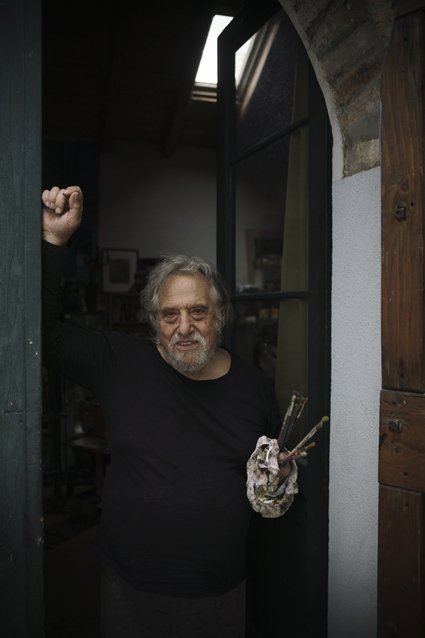LUCIANO ZAROTTI
Luciano Zarotti was born in Venice in 1942.
He spent his childhood in his hometown, painting landscapes en Plein air when he was young to study light with famous Venetian painters like Bergamini, Seibezzi, Dinon, Mori.
In the mid-1960s he lived in Paris and attended the École des Beaux-arts where he met Cesetti and Licata. From the Parisian art world, he drew a new vision, including the first pop influences.
When he returned to Venice, he met Carrà at the Biennale of Engraving and studied a new language: since then he has created more than three hundred plates, most of them of large dimensions.
In 1966 he started to participate in Opera Bevilaqua la Masa exhibits in Venice, receiving many prizes and awards since then.
During the 1968 cultural unrest, he joined cultural and political activities which were not devoid of social tension.
In 1970 he started to collaborate for glass work with Egidio Costantini’s Fucina Degli Angeli in Venice, a partnership that lasted more than 30 years and allowed him to meet international artists like Max Ernst, Mark Tobey, Sebastian Matta, and particularly Paul Jenkins. He took part in all Fucina’s major international exhibits and was invited to contribute to the renewal of glass design in Romania.
He attended the Accademia di Belle Arti in Venice where he met Luigi Tito at the Nude Free School.
In 1972 he was asked to teach this same subject, thus consolidating a long-lasting friendship.
He learned all ancient painting techniques and particularly fresco from Bruno Saetti.
He was granted an atelier for young artists by Opera Bevilacqua la Masa in Palazzo Carminati in Venice, where he worked for almost ten years.
He joined the Venetian Engraving Association and directed it together with Giorgio Trentin and Neri Pozza. He took part in the major international graphic art events and was defined Best Engraver for the years 1971 and 1972 on Bolaffi graphic catalog by Guido Perocco, Director of Venice Modern Art Museum in Cà Pesaro.
He was invited and awarded at the 4th International Graphic Art Biennale at Palazzo Strozzi in Florence. He was invited by Renato Guttuso to the 10th Quadriennale for the future generation in Rome, with a personal hall.
He was a member of the awarding jury at the Bevilacqua La Masa annual Collective exhibit.
The birth of her daughter Zaira spurred a new artistic research. Among the many works of this period called “Eventi”, one is dedicated to Giorgio Morandi, whom he met in Bologna when he was very young.
In 1991 he was granted the Order of Malta Cross of Merit.
He continued teaching Painting at the Accademia di Belle Arti in Venice and also Fresco and Ancient and Modern Painting Techniques at its Villa Manin branch in Passariano, Udine. His colleagues were, among others, Vedova, Zotti, Finzi, Gaspari, Pizzinato.
He produced the Great Book of Revelation with more than 75 tables and many other small sizes illustrated books.
He started in 2003 a ten-year collaboration with ArcheoClub and the Venice Culture and Environment Authority to restore and recover the 16th-century writings in the isle of Lazzaretto Nuovo.
He retired in 2005 after forty years of generous teaching to devote himself exclusively to his artistic activity, experimenting with new materials in both painting and sculpture, including terracotta and bronze.
Among his numerous exhibitions, Cà Pesaro International Gallery of Modern Art in Venice homaged his career with a retrospective exhibition entitled 'Veneziano Pop' in 2018.
His works are exposed in Russia, USA, France, Japan, Romania, Israel, Spain, and Italy.
You can see more of his work at his website: www.lucianozarotti.com or by following him on Instagram: @luciano_zarotti
His monograph can be purchased here.

